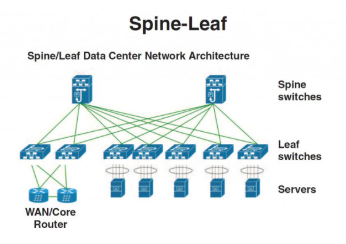In an era where technology is advancing rapidly and business demands are evolving constantly, building a scalable, future-ready infrastructure is no longer optional, it is a necessity. As network professionals, we are uniquely positioned to design and implement solutions that not only address today's requirements but also anticipate tomorrow's challenges.
The success of infrastructure scaling hinges on several key principles: flexibility, automation, security, observability, and cloud adaptability. Let us explore these in greater depth.
- Design for Flexibility and Modularity
When scaling infrastructure, rigid Architectures quickly become roadblocks. A future-ready infrastructure must be modular, allowing components to be upgraded, expanded, or replaced independently. Technologies like Software-Defined Networking (SDN), virtualization, and hybrid cloud solutions enable greater agility, making it easier to pivot in response to evolving business needs.
Choosing open standards, interoperable hardware, and scalable network designs ensures that organizations are not locked into outdated technologies, allowing seamless growth and innovation over time.
- Embrace Automation and Intelligent Orchestration
Manual network management can hinder scalability. Automation is critical for consistent, rapid expansion. Tools like Ansible, Terraform, and centralized orchestration platforms allow for rapid deployment, configuration management, and scaling without extensive manual intervention.
Automation not only improves operational efficiency but also reduces human errors, which can become exponentially more costly as networks grow in complexity. Intelligent orchestration ensures infrastructure can dynamically adjust to workload changes, traffic patterns, and business growth.
- Build Security and Compliance into the Foundation
As networks scale, so does the complexity of securing them. Incorporating security from the ground up - rather than treating it as an afterthought - is critical to protecting growing infrastructures.
Approaches like Zero Trust Architecture (ZTA), network segmentation, encryption, and Identity and Access Management (IAM) must be integral parts of scaling strategies. Compliance with regulations like GDPR, HIPAA, and industry-specific standards should be monitored continuously, ensuring that scaling efforts do not inadvertently introduce vulnerabilities.
- Prioritize Full-Stack Observability
Infrastructure that cannot be measured cannot be managed. Modern infrastructures must have comprehensive observability, end-to-end visibility across applications, networks, and hardware.
Deploy advanced telemetry, NetFlow analytics, real-time monitoring, and AI-driven insights to detect anomalies and performance degradations early. Observability tools also enable predictive scaling, where resource demands can be anticipated and addressed before they impact service delivery.
- Leverage Cloud-Native and Elastic Technologies
To scale effectively, embracing cloud-native architectures is essential. Containers, microservices, serverless functions, and dynamic resource allocation allow organizations to scale applications and services based on real-time needs rather than static provisioning.
Hybrid and multi-cloud strategies offer flexibility, cost control, and global reach, empowering businesses to grow without being constrained by physical data center limitations.
Conclusion
Scaling infrastructure to meet future needs is not just about adding more servers, bandwidth, or devices. It requires strategic foresight, intelligent design, and a proactive mindset. By building flexible, automated, secure, observable, and cloud-adaptable infrastructures, network professionals can ensure that their organizations are ready to meet the demands of an increasingly complex and fast-paced digital world.
In doing so, we not only future-proof our environments but also drive the innovation and resilience that our organizations need to thrive.
This blog article was written by a human and tuned up by Super Grok.
TOP
Rethinking Data Center Networks with Spine-Leaf Architecture
Architecture Introduction
In today's fast-paced digital world, data centers are evolving to
handle more data, lower latency, and dynamic workloads. Traditional
three-tier architectures-comprising core, distribution, and access
layers-struggle to keep up with these demands. A newer design, known as
spine-leaf architecture, offers a better solution for the needs of both
current and future data centers.
Simplified Explanation of Spine-Leaf Architecture
Think of spine-leaf like a city's metro system:
Every leaf switch is connected to every spine switch. There's no
hierarchy, just two layers. This creates a fast, efficient, and
predictable network.
Key Benefits
-
Equal Paths, Faster Data: Since every leaf connects to all
spines, data finds the shortest path.
-
Easy to Grow: Need more servers? Add more leaf switches.
Need more bandwidth? Add spine switches.
-
Built-in Redundancy: Multiple connections mean the network
keeps working even if one path fails.
-
Simplified Design: Two layers are easier to design and
troubleshoot than traditional three-tier networks.
Diagram: Modern Spine-Leaf Architecture

Why It Works Now and, In the Future
-
Current Needs:Cloud services, virtualization, and east-west
traffic (server-to-server) dominate. Spine-leaf handles this
smoothly.
-
Future Demands:AI/ML workloads, edge computing, and
real-time analytics need speed, reliability, and scale. Spine-leaf
is already ready.
Comparison Table
| Feature |
3-Tier Architecture |
Spine-Leaf Architecture |
| Layers |
3 |
2 |
| Latency |
Higher |
Lower, consistent |
| Scalability |
Limited |
High, modular |
| Ideal for Traffic Type |
North-South |
East-West |
| Complexity |
Higher |
Simpler, uniform |
Supporting Technologies
-
VXLAN + EVPN: Let you build scalable Layer 2 domains over IP
fabric.
-
BGP or OSPF: Handle dynamic routing in the spine-leaf
network.
-
Automation Tools: Ansible, Terraform, and Python simplify
deployment and operations.
Final Thoughts
Spine-leaf isn't just a trend - it's the future-proof answer to growing
data center demands. As digital infrastructure expands, this design will
continue to support everything from AI workloads to remote education
platforms and edge computing.
By moving to spine-leaf, organizations gain performance, resilience,
and the flexibility to grow without overhauling their entire network.
TOP
